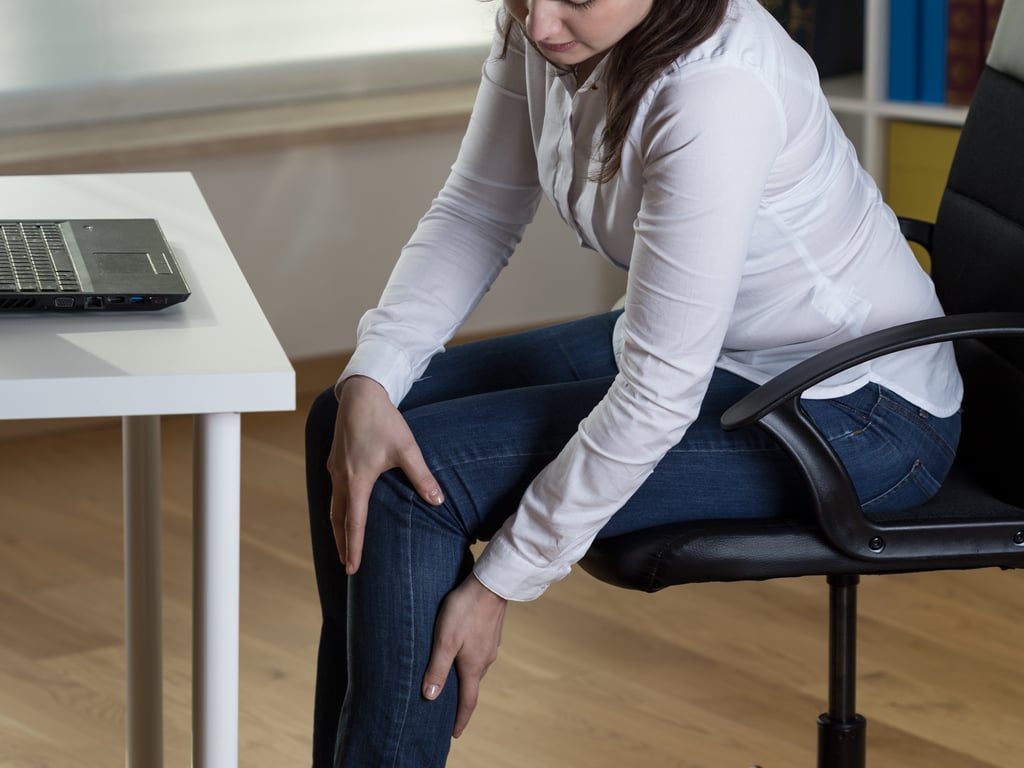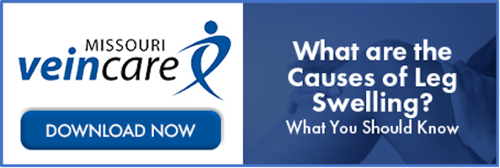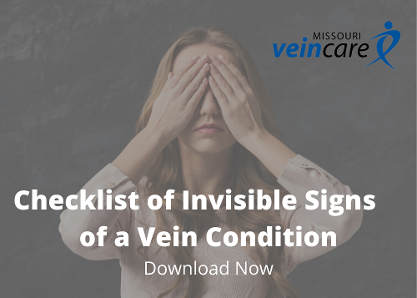Does a Lack of Activity Cause Leg Pain?
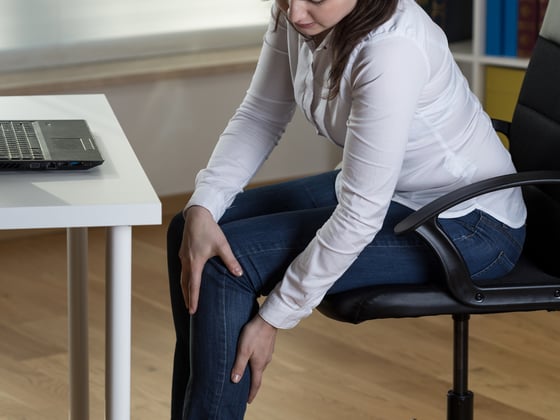
If you sit for long periods of time at a desk, driving a truck, traveling, or just enjoying an afternoon of television, you may notice your legs beginning to swell below the knees. This swelling can be very uncomfortable and may make it difficult to walk around, especially if sitting is part of your normal daily routine. In this video, I talk about why it happens and what you can do about it.
Several hours or more of inactivity can cause leg swelling. Normally, when you are up and walking around, your leg and calf muscles work to pump the fluid out of your legs. The calf muscle pump works to ensure proper circulation. When you sit for an extended period of time, the calf muscle pump is resting and not working. As a result, fluid builds up and causes swelling. This fluid feels makes your legs feel heavy, tight, and sore.
What Can You Do to Relieve or Prevent the Swelling?
By keeping your body moving, you are simply letting the calf muscle pump do its job and properly circulate the blood back to the heart.
1. Regular breaks to walk
If your job or lifestyle requires long periods of sitting, you can help your legs maintain proper circulation by getting up and walking around for at least 5 minutes each hour. Set your phone alarm as a reminder, and stand up and take a brief walk to get the leg muscles pumping.
2. Foot exercises
Another option is to do foot exercises. This promotes blood circulation in your feet and legs. You can do this exercise while sitting or standing. If sitting, just be sure to contract your muscles and not just move your foot around. Repeat these exercises every 15-minutes or so. The purpose of this is to get the muscles to contract and pump blood out of your leg. You can see the images below for some additional visual demonstrations of how to do these exercises. My recommendation is to do both of these exercises throughout your day, and not just one so that the muscles in both the front and back of your calf get exercise.
Toe Raise Exercise
Sitting or standing, lift your heels off the ground.
Raise and hold for 3 seconds, lower, and repeat.
This allows the muscles in the back of your calf to contract.
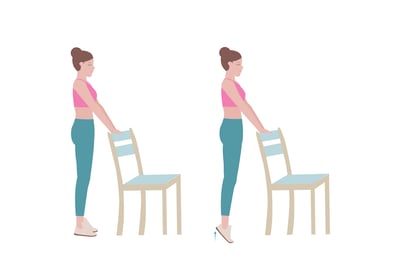
Heel Rock Exercise
This can be done either sitting or standing.
Lift up onto the heel of your foot and curl your toes up, hold for 3 seconds, lower, and repeat.
This allows the muscles in the front of your calf to contract.
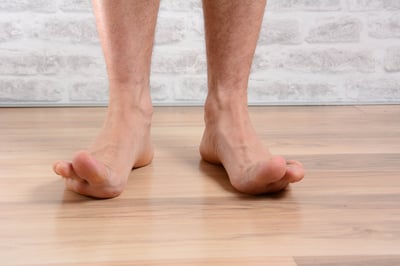
3. Compression stockings
Finally, another suggestion is to wear compression stockings. Compression stockings serve to reduce the amount of swelling in the legs. There are different kinds of compression stockings, and usually, knee-high stockings are sufficient and more comfortable, but some people may prefer the thigh-high. Visit our Comprehensive Guide to Compression Stockings to learn about getting the right compression strength as well as tips for putting them on and taking them off easily. The best recommendation is generally for 20-30mmHG compression strength, but 16-20mmHG is a good starting point for some. 16-20mmHG is looser and more comfortable and may be adequate for many people.
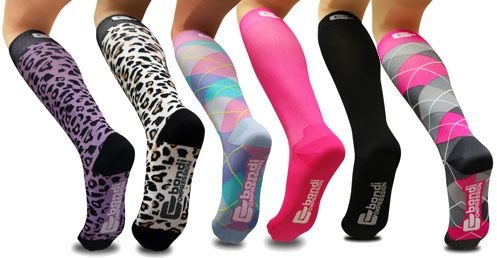
If you are suffering from leg symptoms because you are being asked to sit for long periods of time due to work or travel, you're not alone. In addition to leg pain, swelling in the legs can also cause fatigue. If you find that you are feeling tired, worn out, and exhausted at the end of the day despite having what you would consider a good night's sleep, then it may be time to visit a vein care specialist. Thankfully there are fairly simple treatments, in addition to the points listed above, that can help greatly improve leg symptoms and overall vein health.
When you find that the above exercises don't help and you are unable to do the activities you used to be able to do, feeling like you are having to slow down at home or at work, it's time to schedule a vein screening. The initial screening is free and easy. Our team will ask about your story and review your symptoms, and most importantly evaluate the pattern of your symptoms which might indicate a vein condition. From there, we'll recommend the appropriate next steps.

